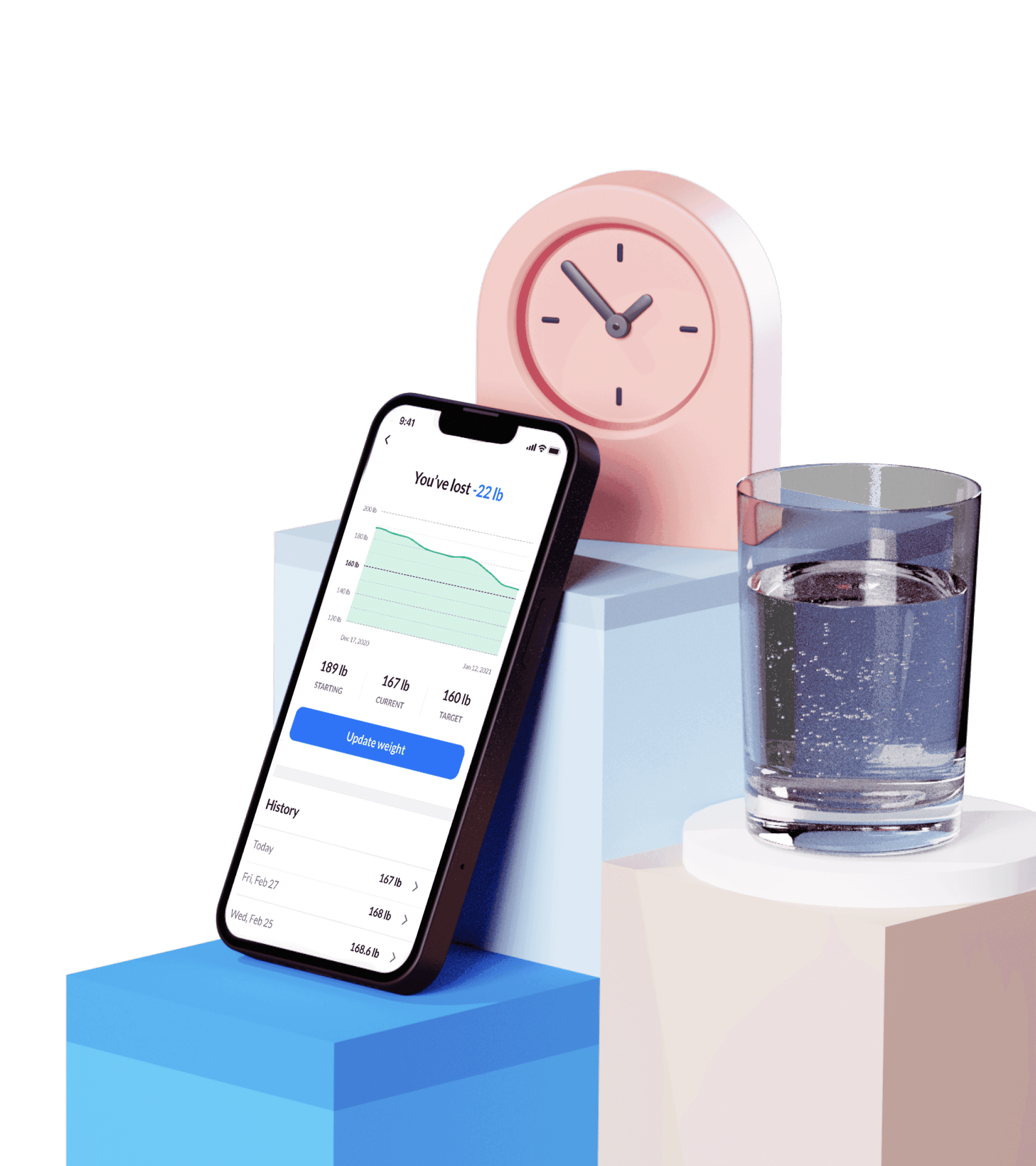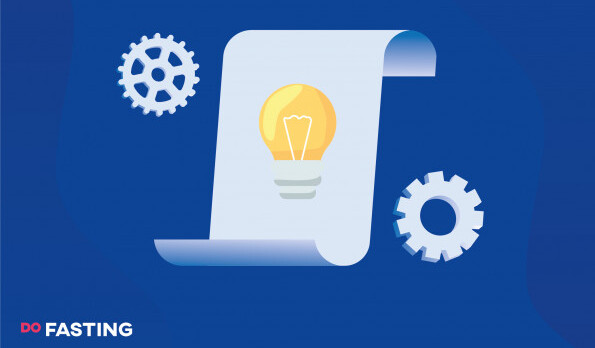Contents
What Are the Basic Principles of Intermittent Fasting?
To begin with, let’s go over some of the basic tenets of intermittent fasting and how it works.
And whether you are familiar with the idea of fasting or a newcomer to the scene, there are some fascinating things to be learned about intermittent fasting practices to lose weight and gain health benefits.
The core premise of intermittent fasting is to push your body into what is known as metabolic processing, through the implementation of cycles for eating and fasting.
The length of these feeding and fasting periods do differ, depending on the type of intermittent fasting plan you ascribe to, but their main purpose is to kickstart your body’s metabolic process.
And why would you want to spark a metabolic switch?
Well, that’s where the weight loss comes in, and a variety of other health benefits of intermittent fasting.
It is a great way to change your body from its old habit of using sugar for energy and becoming a fat-burning machine instead for maximum weight loss.
Plus by targeting your body fat and the various fat stores that have accumulated over time, you can experience so many advantages apart from losing weight, including your overall health and disease prevention.
For example, by restricting calories, your insulin levels drop, growth hormone secretion is heightened, and your true fat-burning potential is achieved.
This all helps your body to repair itself and rejuvenate on a cellular level, preventing aging and other problems like arthritis, high blood sugar, and cardiovascular issues.
Take a
1-minute quiz
and discover how much weight you can lose with DoFasting!

Most Common Intermittent Fasting Methods
There are several ways to implement intermittent fasting into your diet for maximum weight loss, a healthier diet, and prolonged weight management.
And as previously mentioned, each type of fasting relies on a different window of time for you to consume daily calories versus a period of fasting and fat burning.
The amount of time and calories allowed in each plan is what makes this a unique diet and way of life!
But what does fasting look like when you lay it out across your schedule?
Let’s take a closer look at what a sample week might look like for someone who has adopted the intermittent fasting lifestyle for the ultimate fat loss.
For instance, say you were going to try out the 16:8 intermittent fasting rules within your schedule. This means that you will need to fast for 16 hours of the day, with an 8-hour eating window to break your fast and get your daily calories in.
What would this look like on a normal day? Well, first, we need to determine when your eating window will be– morning, midday, or evening.
If you require energy and fuel for your body in the morning, for work, taking care of kids, etc., then choosing an eating period that starts with breakfast is wise.
Alternatively, if your afternoon schedule is generally full of activities, sports, or hardcore workouts, it could be best to arrange your eating around those events and opt for a midday meal window.
But for our example, let’s assume that you want to start with an earlier eating window so that you get some calories in to start your day off right! The following list is a brief idea of a day that incorporates the intermittent fasting rules of the 16/8 model:
- 7 a.m.– Breakfast of something with protein and healthy fats, like avocado and egg toast.
- 10 a.m.– Mid-morning snack, such as unsweetened yogurt with whole-grain granola.
- 12 a.m.– Lunch with protein, vegetables, and healthy carbs, perhaps a bowl of Cajun red beans and rice.
- 3 p.m.– Snack with protein, such as nuts.
- Evening– Fasting with water and zero-calorie beverages.
This example is of a more detailed schedule, but many people who try out the 16/8 intermittent fasting method choose a simpler 8-hour time window for eating, such as 9 a.m. to 5 p.m.; 10 a.m. to 6 p.m.; noon to 8 p.m.
In terms of frequency, fasting of any type is highly dependent on your abilities, lifestyle, and schedule.
That being said, most types of intermittent fasting or short-term fasting are safe to do one or two times per week, particularly when just starting out.
For example, you could do the 16/8 intermittent fasting method on Tuesday, return to a normal diet and more calories on Wednesday, and then hop back into fasting for 16 hours on Thursday.
That gives your body time to recover from and adjust itself to your more normal eating patterns, which will likely be changing over time anyway to become much healthier! In general, make sure not to push your body too hard, and it will thank you in the end.
But if you are worried at all about the scheduling and timing part of intermittent fasting rules, don’t worry– we have the solution!
Because the time periods involved with intermittent fasting are so important, not only to lose weight and maintain a healthy blood sugar level but also to kickstart the 5 stages of fasting.
This is where the metabolic switch and ketosis come in, turning yourself into a body fat burning machine. It’s all about timing– so, you should really try not to eat outside of your window or break your fast early.
Enter the DoFasting app to help you keep track of your progress and time your eating and fasting windows effortlessly!
With a built-in timer and adjustable window periods, your device can keep you up-to-date and motivate you further with helpful information and reminders.
You can even see the level of fat burning your body is likely within as the timer counts down to your next window, taking all the hassle out of setting alarms and glancing at the clock. The DoFasting app is here to help you stay on top of your game, every day.
We now have a good understanding of what a sample day in the life of someone doing intermittent fasting involves.
So, let’s take a closer look at the variety of intermittent fasting types available for anyone wanting to pursue weight loss and better health for life.
Take a
1-minute quiz
and discover how much weight you can lose with DoFasting!

16:8 Intermittent Fasting
We already went over this method for our sample day schedule, but there are a couple more things worth mentioning.
With fasting rules of an 8-hour eating window paired with only 16 hours of fasting, this is one of the shorter periods of ketosis that your body can enter when fasting.
That being said, it’s still a healthy lifestyle that will benefit you in the long run, and produce results in the present.
However, it’s important to stick to a strict timing schedule and balance your meals around the fasting period to make this method work.
Alternate-Day Fasting
This is another form of time-restricted intermittent fasting, which basically follows its name.
Instead of fasting for a portion of one day and having a specific eating window, you fast for one day, then eat normally the next.
This alternative-day cycle might sound easy enough, but it’s definitely a rigorous style of intermittent fasting that helps you see weight loss results fast.
More specifically, while fasting during a whole 24-hour period, you are limited to a maximum of 500 calories or else it will break your fast and abort the metabolic switch. However, you can drink water and other zero-calorie beverages during your fast.
And then, on eating days, you are able to consume the diet you are normally accustomed to! The trick to weight loss is to balance out days where you eat with a full day of fat burning.
5:2 Method
Arguably one of the more popular types of intermittent fasting, this method is espoused for its relative ease when integrating it into your lifestyle, and the results that are gained from it.
Another form of using entire days to alternate your calorie intake, with the 5:2 plan you will spend 5 days of the week eating normally and 2 days restricting calories.
These fasting days do not have to be consecutive and can split up the week however you prefer– but make sure you only eat under 500-600 calories during that time.
24-Hour Fasting
If you do not want to restrict your calories with daily periods of intermittent fasting, another option is to incorporate a full day of fasting into your schedule.
This type of fasting be done every now and then to boost your weight loss or kickstart your metabolic process even more, or as a bi-weekly fast– it’s very flexible and up to your body and lifestyle.
Essentially, 24-hour fasting is just that: you restrict calories for a full day, only breaking your fast for one meal, the time of which can be tailored to suit you.
Thus, if you eat breakfast at 8 a.m. the day before, you should fast until 8 a.m. the following day.
One Meal a Day
The one meal a day format of fasting (or OMAD, for short) uses the 23:1 timing. You are fasting for 23 hours but are able to eat within a single hour during a given day.
However, this type of fasting can be more comfortable for those who are used to a fairly restrictive fasting period, such as the 16:8 or 20-hour fasts. Graduating to one meal a day virtually only involves skipping one or two meals, anyway!
If you are comfortable with other such intermittent fasting types, then this might be a good way to push your body even more and smash your weight loss goals, along with all the incumbent health benefits.
Intermittent Fasting Rules To Be Successful
We have explored how intermittent fasting works, examples of a typical fasting schedule, and discussed some of the different types of fasting. Now, let’s dive right into our top fasting guidelines and 12 rules for intermittent fasting!
- Ease Into Intermittent Fasting
One of the best tips for getting started with fasting is to take it slow.
For anyone just beginning their intermittent fasting journey, it’s wise to start with a lower level of fasting type before progressing.
Instead of choosing to start out with a 24-hour fast, for instance, start small with the 12-hour fasting method. This is arguably the most beginner-friendly, as your body is already asleep for a good portion of that 12-hour fasting cycle!
In general, don’t push your body too hard while intermittent fasting– it’s all about listening to yourself and feeling well.
- What You Eat Matters
Balancing a proper diet with your fasting routine is the right way to start your new lifestyle.
What you consume outside of fasting periods really does matter, as those are the nutrients that are going to fuel your body during the cycle of calorie restriction.
Stick to a proper diet when not fasting, incorporating protein, vegetables, whole grains, healthy fats, and more into every meal.
Keep your portions reasonable, and try not to binge on processed food or desserts as soon as you break your fast– not only will this undo your good work and make you feel guilty, but you’re likely to feel quite sick after restricting calories for some time.
- Eating Habits Can Be Unlearned
Many people have unhealthy or downright bad eating habits– it’s a shared phenomenon that is common around the world! But it’s also something that can be changed for the better with the introduction of a good diet and a healthy relationship with food.
One of the most important things to keep in mind is that, no matter what, eating patterns can be changed for the better. It just takes some dedication and hard work to get there!
Whether you struggle with binge eating, or a lack of motivation to cook healthy foods, the key to improving your eating habits lies in progressive, meaningful steps toward change.
- The Importance of Salt
You might have heard this before, but salt is a resource that is incredibly good for you– Himalayan or Celtic sea salt, that is.
Indeed, sodium is a critical nutrient for our bodies that allows us to keep blood pressure levels stable and circulate fluid through the entire digestive system.
And when fasting, your body needs all the nutritional help it can get, so make sure you add enough healthy salt to your food between fasts, that will help you maintain good sodium levels and avoid headaches, dehydration, and more.
- Staying Hydrated
Speaking of hydration, drinking water is one of the most important aspects of intermittent fasting rules.
When fasting, you need to keep drinking water and staying hydrated for even your basic body processes to work! Skipping liquids during a fasting cycle is not only unnecessary but can be damaging to your body as it works harder during the metabolic switch.
Other options for what to drink while fasting include:
- Black coffee.
- Black tea.
- Herbal tea.
- Learning to Stay Away From Milk in the Coffee
While it might seem trite, putting milk in your hot drinks is not a good idea when pursuing an intermittent fasting diet.
You want to stick to as few calories as possible when fasting, and even milk calories can contribute to a larger issue of slip-ups, affecting your end result. So, instead, it’s best to save creamy coffee for fasting days off.
- Staying Away From the Sweeteners
Similar to milk in your coffee, sweeteners with cause havoc in your fasting routine and with your blood sugar.
If you eat sweeteners during fasting, your glucose levels will spike, leading to a false energy rush that fades quickly and leaves you feeling fatigued and irritable.
An exception to this is zero-calorie sweeteners, like Stevia, but these should only be consumed during “dirty” fasting or meal skipping, rather than a proper fasting cycle, for the same reasons.
- Fasting Must Not Be Stressful
It’s no secret that weight and stress are connected. Some people lose weight when experiencing high stress while others gain it, depending on how their bodies react to the situation.
And because stress can also lead to stagnation in weight loss mid-way through your journey, it’s important to avoid such situations as much as possible, for both your physical and mental wellbeing.
So, don’t push yourself to your limits when fasting, and try not to stress about your weight– it won’t help at all!
- Listen to Your Body
Another vital intermittent fasting rule is to always listen to your body. Each person is entirely different and unique, and that applies to the way our bodies react to diets and fasting.
What works for one person might not be successful for another, and that’s alright. The key lies in listening to your own body, monitoring your health and progress, and interpreting your body’s signals correctly.
You don’t want to push yourself too far and end up doing damage instead of getting into healthier habits!
- Introduce Supplements
As you might expect, it’s very important to keep your body properly fueled for fasting and eating cycles alike, and what better way to do so than by introducing supplements into your diet.
Not only will the right supplements keep you energized and feeling healthy, but you can even use them to help combat hunger pangs and extend your fasting window comfortably.
In particular, DoFasting Supplements are great for losing weight faster and maintaining your overall health. They contain natural appetite suppressants and various nutrients to help you achieve your goals faster.
Each supplement pack is gluten-free, non-GMO, organic, sugar-free, and appropriate for vegans. They also contain natural cellulose and glucomannan for faster results and are only 10 kcal per packet.
Other ingredients include:
- Microcrystalline cellulose.
- Natural flavor.
- Citric acid.
- Stevia extract.
- Sea salt.
- Fruit and vegetable juice.
- Rice hulls.
For anyone who is just starting a fast, or is partially through their pre-existing intermittent fasting regimen, these supplements are perfect for accelerated weight loss, energy levels, and physical wellbeing!
- Consider Light Exercise
By pairing your restricted calorie windows with ways to get the body moving with the right exercise, you can see better results appear much quicker.
However, it is important to avoid very strenuous exercises or intense workouts during a fasting cycle, such as a HIIT session, as this can overtax your body and the limited amount of nutrients available.
Instead, opt for light exercises that get your blood flowing and your energy levels activated.
- Medication Time
If you take medication that requires food accompaniment, then you might be worried about starting a fast. Many medicines work better and are safer when paired with a meal, so remember that when scheduling your fast.
If you take morning medication with food, start your fasting period after the meal. Or, if you have to take it during a fast, do so with a small amount of food to compensate.
It’s more important to keep current with your medications than to have a fully empty stomach! Nevertheless, it’s crucial to consult with a medical professional before starting this diet with a strict medication schedule, for your own safety.
Can Everyone Do Intermittent Fasting?
While intermittent fasting is a great way to lose weight and gain a healthier lifestyle, there are many people who would likely not benefit from this diet.
This includes anyone struggling with insulin levels or heart issues, such as diabetics and heart attack survivors, as well as anyone under the age of 18.
However, if you also identify with any of the following on this list, you are likely to be at risk when trying to fast, and should discuss it with a doctor first:
- A history of eating disorders.
- Blood sugar issues.
- Cardiovascular disease.
- Diabetes.
- Gastroesophageal reflux.
- High blood pressure.
- Insomnia.
- Pregnant or breastfeeding.
Conclusion
Now that we have explored the details behind why people choose intermittent fasting to pursue a better lifestyle, and why it actually works, are you intrigued enough to try it for yourself?
By following intermittent fasting rules, you can lose weight and change your life. And to help you do so, don’t forget to download the DoFasting app to easily time your fasting cycles and track your progress every day!
See how DoFasting will improve your life
Find out what works for you with this 60-sec quiz approved by our experts and get your personal revolutionary fasting assistant.
Start the Quiz













